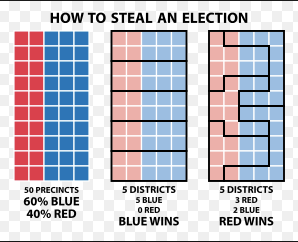Gerrymandering According to John Oliver
John Oliver and his staff do an outstanding job of taking complex issues that affect us all and making them simple and easy to understand. The profound impact of gerrymandering explained here.
Redistricting and Reapportionment
Follow NYT Redistricting and Reapportionment ongoing series

How Maps Helped Republicans Keep an Edge in the House
Wisconsinites leaned Democratic when they went to the polls last month, voting to re-elect President Obama, choosing Tammy Baldwin to be their new United States senator and casting more total votes for Democrats than Republicans in races for Congress and the State Legislature.
But thanks in part to the way that Republicans drew the new Congressional and legislative districts for this year’s elections, Republicans will still outnumber Democrats in Wisconsin’s new Congressional delegation five to three — and control both houses of the Legislature.
Pennsylvanians also voted to re-elect Mr. Obama, elected Democrats to several statewide offices and cast about 83,000 more votes for Democratic Congressional candidates than for Republicans. But new maps drawn by Republicans — including for the Seventh District outside Philadelphia, a Rorschach-test inkblot of a district snaking through five counties that helped Representative Patrick Meehan win re-election by adding Republican voters — helped ensure that Republicans will have a 13-to-5 majority in the Congressional delegation that the state will send to Washington next month.
Republican-drawn lines also helped Republicans win lopsided majorities in other swing states Mr. Obama won: Democratic Congressional candidates won nearly half the votes in Virginia but only 27 percent of its seats, and 48 percent of the vote in Ohio but only a quarter of its seats.
